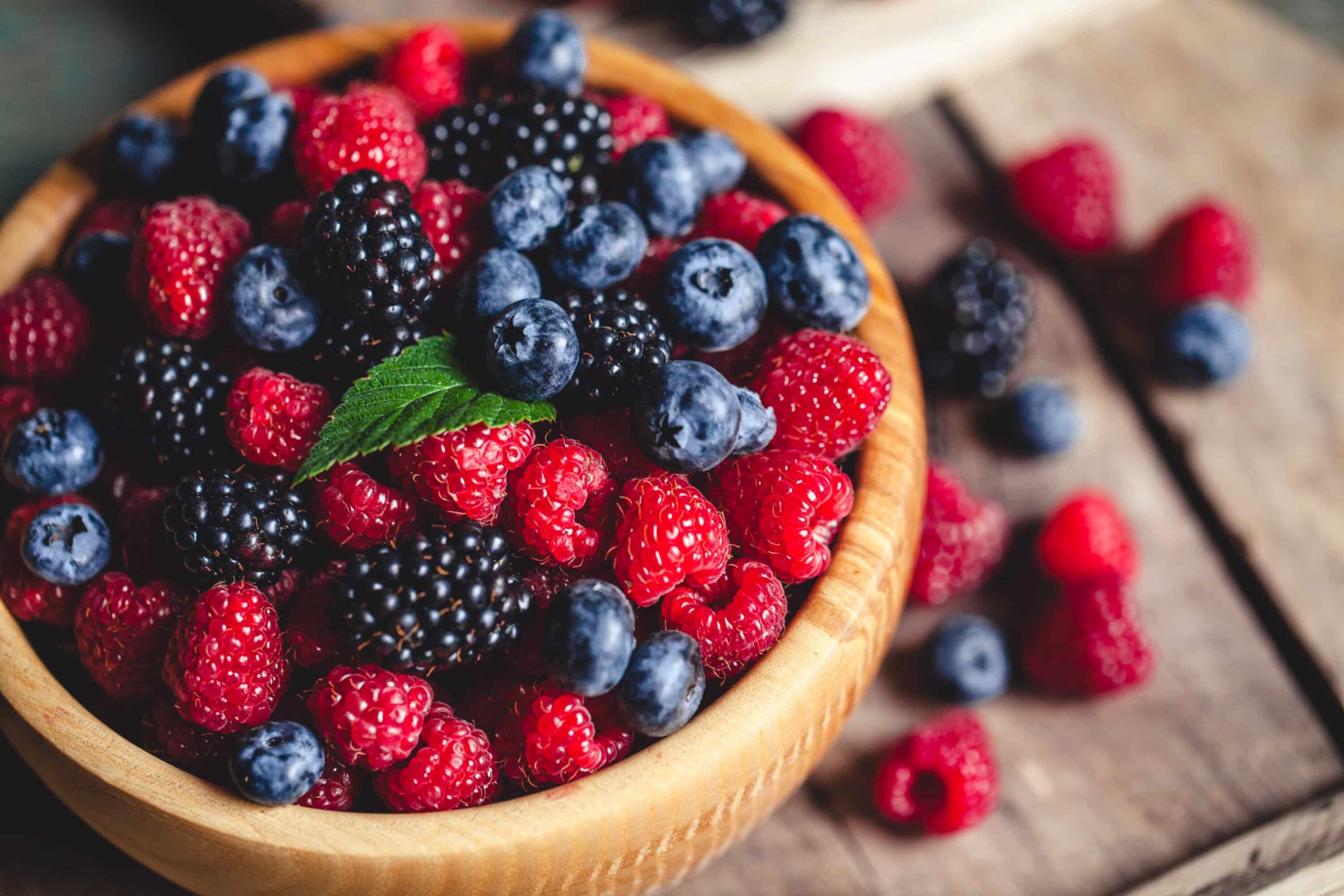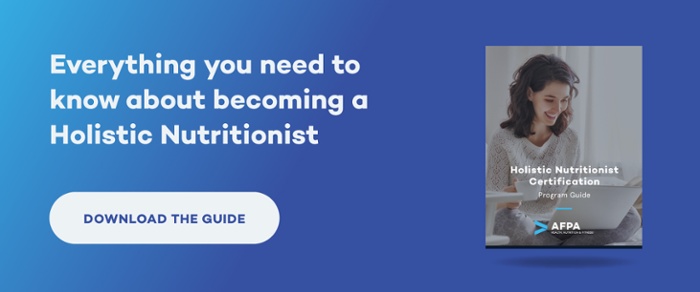Baby greens in the spring, watermelon in the summer, apples in the fall, and squash in the winter; the changing leaves and temperatures are accompanied by a variety of fruits and vegetables that characterize the tastes of the season.
Seasonal produce refers to the fruits and vegetables available during different times of the year in a specific region.
More specifically, the seasonality of produce can be defined in two ways:
- Globally seasonal produce: Fruits, vegetables, and herbs produced in the natural production season but consumed anywhere in the world. For example, since Chile has a similar climate to the US but an opposite growing season, cherries produced in the months of November through January are seasonal, even if they are consumed in other parts of the world.
- Locally seasonal produce: Fruits, vegetables, and herbs produced in the natural production season and also consumed in the same climatic zone. This would include, for example, lemons grown in California in May but not the imported Chilean cherries described above.
What would not be considered seasonal produce by any means would be that which is produced in an artificially controlled environment to simulate natural growing conditions. Often, these sorts of fruits and vegetables have a high environmental impact due to the amount of energy required to maintain the ideal growing conditions. They also tend to be more expensive.
This seasonal produce guide focuses on the second definition of seasonality; it will help you identify and purchase locally seasonal produce. Keep in mind that the seasonality of produce changes significantly around the world. This guide is designed for people living in the US.
As a health and wellness coach, you can use this guide to teach your clients about the benefits of eating locally seasonal produce and help them plan meals and shopping lists for every season.
What Are the Benefits of Eating Locally Seasonal Produce?
You’ll Add Nutritional Variety to Your Diet
Have you ever heard of diet monotony? It is when, due to convenience, likes, and dislikes, lack of time, or budget, you subconsciously or consciously purchase and consume the same foods year-round. Research shows it is correlated with poor nutritional intake.
By consuming a variety of foods, especially fruits and vegetables, you are getting a variety of nutrients in your body, some of which may be missing from a monotonous diet. Not only are you making your daily meals and snacks more interesting and tasty, but you are also providing a variety of vitamins, minerals, antioxidants, and phytonutrients to your body.
You Connect with and Support Your Local Community
By consuming locally seasonal produce, you are naturally supporting the local economy. Since locally seasonal produce needs to be produced by local farmers, you are supporting their livelihoods by purchasing it.
If you purchase your produce at farmers’ markets and agricultural fairs, you will also have an opportunity to meet your local farmers, and build community connections.
You Adopt a More Sustainable Diet
Most standards diets in the US are based on food systems that deplete environmental resources. Sustainable diets are based on consuming locally and responsibly produced foods, minimal processing, and supporting local cuisine. Buying and consuming locally seasonal produce is a vital part of building sustainable diets.
You’ll Protect Your Budget
Rising food prices are alarming to most people.
When you make an effort to purchase locally seasonally produce rather than off-season produce, it helps you save money. Even when produce is produced in season in other countries or regions, transporting that food to your supermarket will likely raise the costs.
You’ll Have Better Tasting, Nutritious Produce
Often, produce grown out of season has impaired taste, nutrition, and quality than when it is grown and consumed in season. This is because the environment or the produce itself must be manipulated for the fruits and vegetables to grow and mature properly.
You can learn more about how eating local seasonal produce improves taste, quality, and nutrition by reading this article.
Fruits and Veggies All Year-Round: The Ultimate Seasonal Produce Chart
The US Department of Agriculture (USDA) is responsible for leading policy on food, agriculture, natural resources, rural development, nutrition, and related issues based on public policy, the best available science, and effective management in the United States.
The USDA has identified the produce that grows in the US during all four seasons.
You can use this chart to help you make food choices during different seasons. Keep in mind, however, that depending on where you live in the US, some of these fruits and vegetables will be more readily available to you than others. When in doubt, visit your local farmers’ market or agricultural fair and see what the pickings are all year-round.
Spring Produce Shopping Guide
Summer Produce Shopping Guide
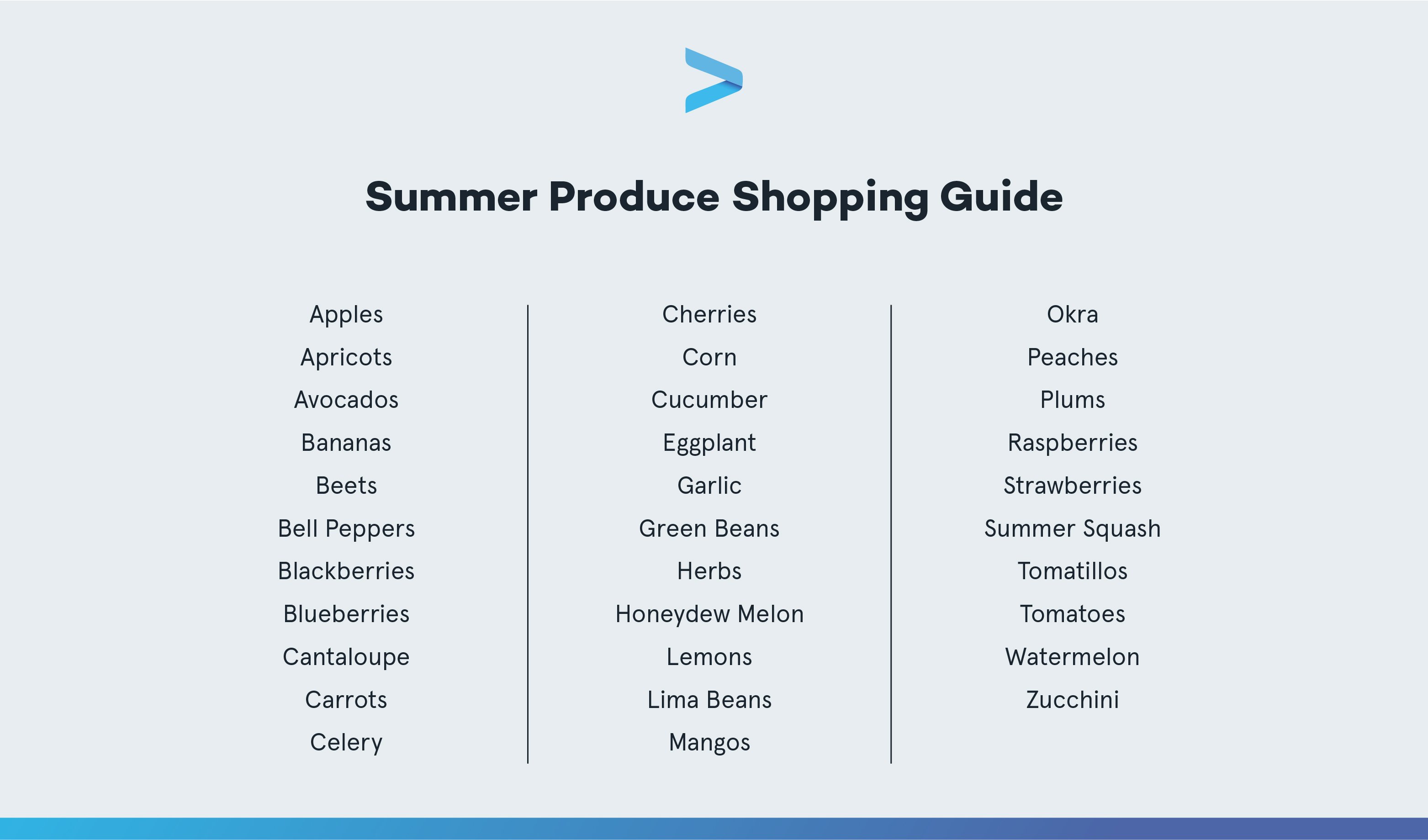
Fall Produce Shopping Guide
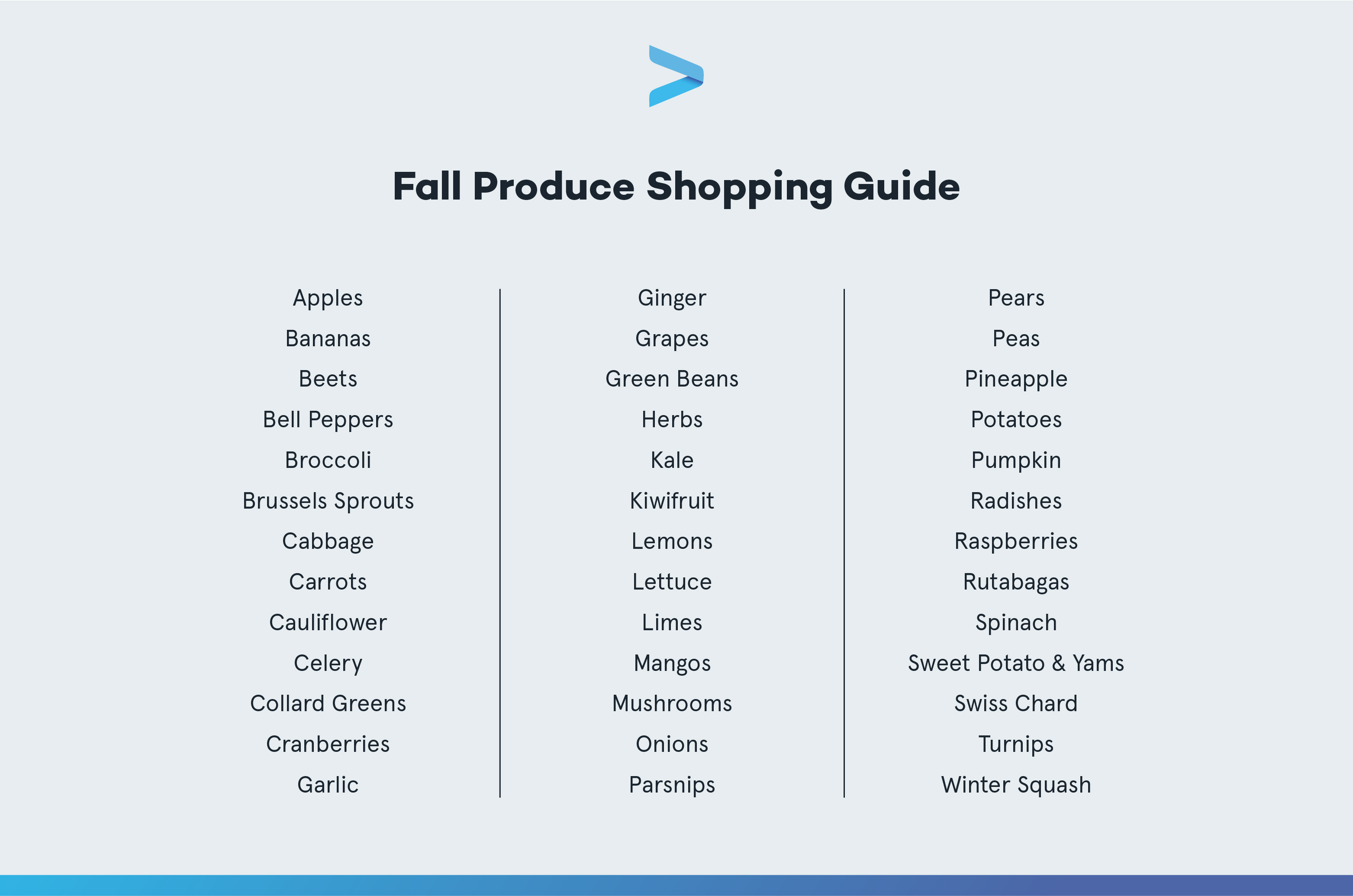
Winter Produce Shopping Guide
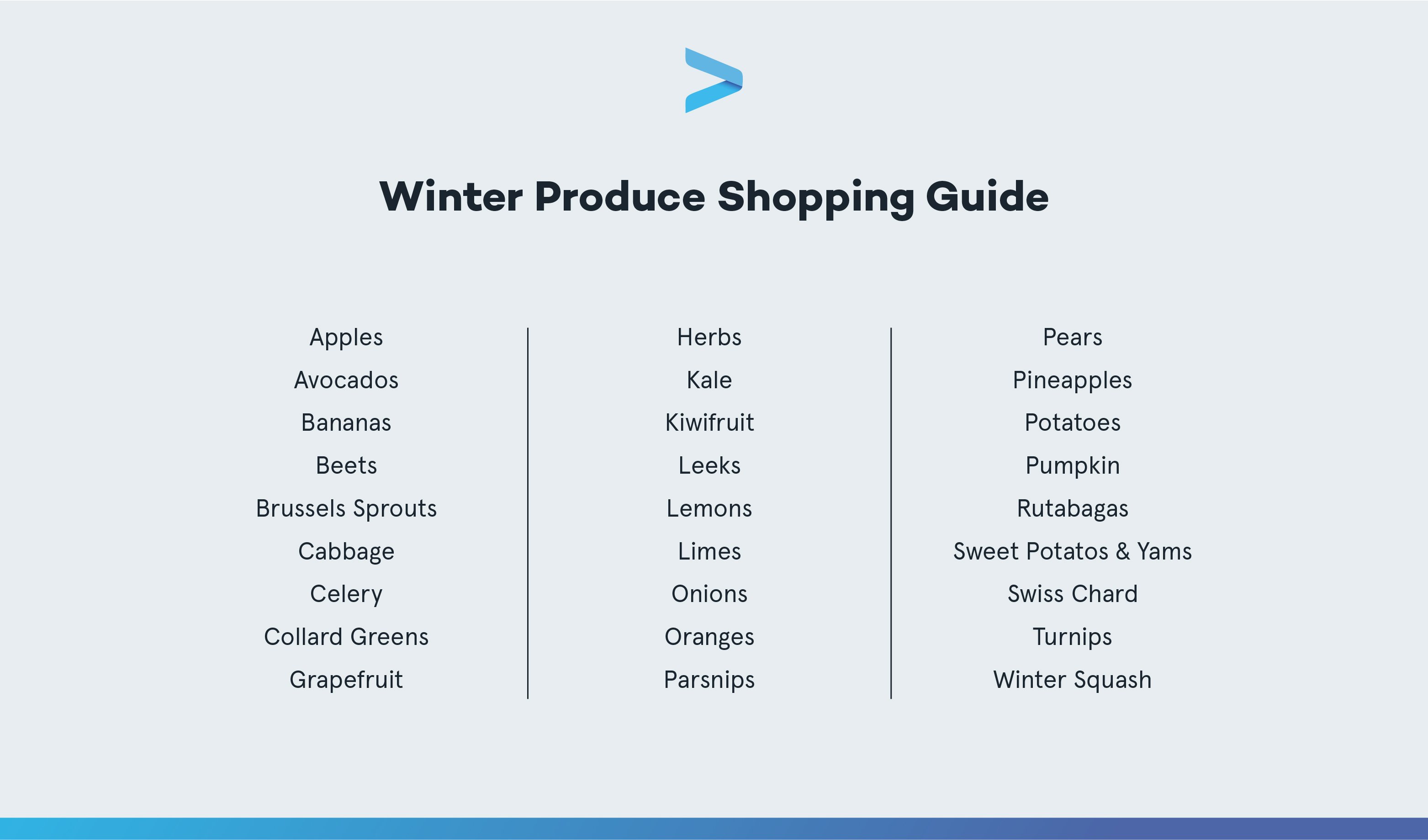
Main Takeaways
Eating locally seasonal produce is a great way to care for your nutrition, budget, and community. It is an opportunity for you to connect with your food, experiment in the kitchen, and gain access to a variety of nutrients.
If your client isn’t accustomed to eating locally seasonal produce, this guide can help them get started. Have them refer to the seasonal produce charts when they are planning meals for the week or making their shopping list.
Keep in mind that, while this chart is helpful, it may not capture the production calendars of your client’s region. If they want to learn more about locally seasonal produce, encourage them to visit farmers’ markets, agricultural fairs, or purchase from farmers’ cooperatives.
To learn more about the science and benefits of eating locally seasonal produce, read this article.
References
- https://snaped.fns.usda.gov/seasonal-produce-guide
- https://pubmed.ncbi.nlm.nih.gov/25027288/
- https://fruitsfromchile.com/trade/availability-chart/
- https://planthardiness.ars.usda.gov/
- https://www.yourcentralvalley.com/news/citrus-season-is-underway-in-central-california-2/
- https://pubmed.ncbi.nlm.nih.gov/12671828/
- https://www.cambridge.org/core/journals/public-health-nutrition/article/patterns-of-fruit-and-vegetable-availability-and-price-competitiveness-across-four-seasons-are-different-in-local-food-outlets-and-supermarkets/9453CDA3DACEE965B5948DD011B77263

